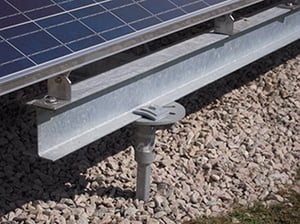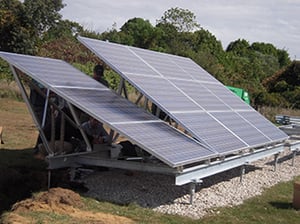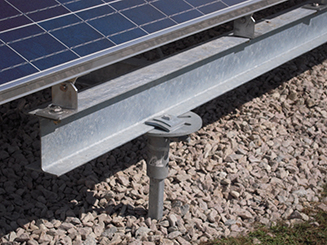 Technological advances have turned solar power into a viable alternative energy source on both the individual and industrial level. People everywhere are discovering that the installation of solar panels on their homes can significantly diminish their carbon footprint and slash domestic energy bills. But making large-scale solar energy generation a reality presents more of a challenge.
Technological advances have turned solar power into a viable alternative energy source on both the individual and industrial level. People everywhere are discovering that the installation of solar panels on their homes can significantly diminish their carbon footprint and slash domestic energy bills. But making large-scale solar energy generation a reality presents more of a challenge.
Obviously, the cost of “solar fields” is significantly higher, while the logistics of large-scale energy transmission and storage are, to put it mildly, complex. However, one of the most persistent and unexpected challenges is attempting to secure and stabilize large numbers of panels.

Even in sun-rich states like Arizona, solar panels are subjected to a lot of environmental abuse. Strong storms and flying debris can cause huge amounts of damage, and when wind speeds increase, these panels are as vulnerable as any other freestanding structure. Keeping these pieces firmly rooted into the surface ensures they can stay upright and serve their purpose.
The U.S. solar market has been steadily growing by an average of 49% per year since 2010, and the need for a universally viable and scalable solution to secure solar panels is critical. Contractors notice the trend, too. Using helical piles as the foundation for solar panel structures can safeguard this expensive equipment against the most common and severe environmental threats. Here’s how installing helical piles can keep your panels where they’re supposed to be:
- Strengthens the panel against uplift. A helical pile is essentially a long pipe with regularly spaced helixes that is driven deep into the ground and attached securely to the solar panel. Unlike most driven pipe and I-beam piles, helical piles can withstand uplift forces due to expanding soil or uplift due to wind because the helixes keep it fixed firmly in place.
- Shorter lengths will cut down on costs. Because helical piles develop their load capacity via bearing on the helix plates, they don’t need to be as long as other types of driven piles. That makes them less expensive and easier to install, while still providing the performance and the assurance engineers and installers require.
- Easier to remove. On average, solar arrays have a life span of only 20 to 25 years. Therefore, if solar panels are to be the power source of the future, moving arrays from one site to another is going to become a regular occurrence. Helical piles can be “unscrewed” from the ground and either reused or recycled. This is impossible to do with a concrete drilled-shaft foundation, which only elevates the long-term cost of generating solar power.


